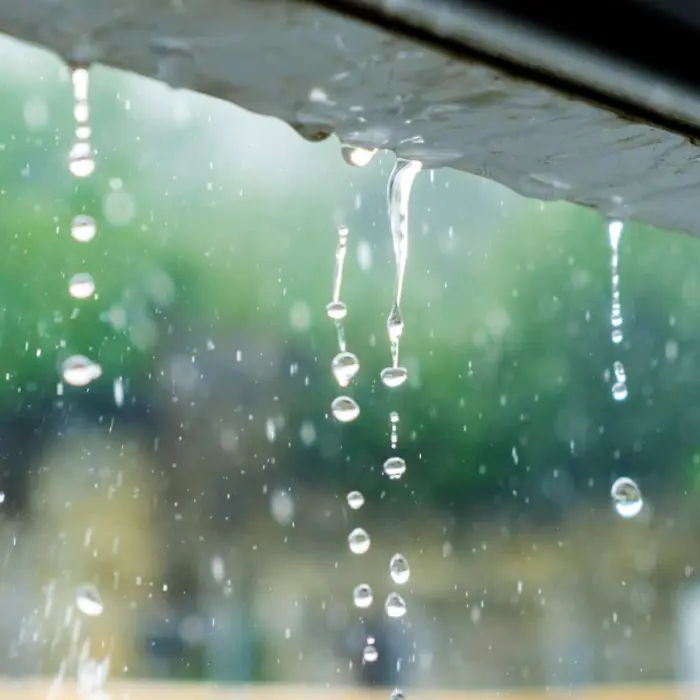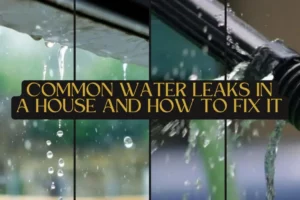Our homes are our sanctuaries, providing us with shelter and comfort. But when leaks occur, they can disrupt that peace and lead to significant damage and financial strain. Home leakages can come in various forms, from a dripping faucet to a leaking roof, each requiring prompt attention and repair.
In this article, we’ll focus on these common issues and provide solutions for dealing with them,
Furnace Exhaust Pipe Leaks
A leaking furnace exhaust pipe can be a source of concern for homeowners, as it can pose health risks due to the release of harmful gases like carbon monoxide. In many modern homes, high-efficiency furnaces use PVC pipes for exhaust, which can develop leaks over time.
How to Fix It:
- Inspect the Pipe: Begin by visually inspecting the entire length of the exhaust pipe for any visible cracks or holes. If you find any damage, take note of its location.
- Replace Damaged Sections: If the inspection reveals damage, you’ll need to replace the damaged section of the exhaust pipe.
This typically involves cutting out the damaged area and replacing it with new PVC pipe and fittings. Make sure to use the appropriate PVC cement to ensure a secure and airtight connection.
- Seal Joints: Even if there is no visible damage to the pipe, it’s a good practice to check and reseal all the joints. Apply high-temperature silicone sealant to ensure airtight connections. This will prevent leaks and maintain proper ventilation.
Roof Leaks

Roof leaks are among the most common home leakages, and they can result from a variety of issues, such as damaged shingles, cracked flashing, or clogged gutters.
How to Fix It:
- Identify the Source: The first step is to pinpoint the source of the leak. Check your attic for water stains or damp spots, which can help you identify the location of the issue on your roof.
- Repair Damaged Shingles: If the issue is damaged shingles, carefully remove the damaged ones and replace them with new ones. Ensure that the new shingles are properly secured to prevent further leaks.
- Address Flashing and Vent Boot Issues: Inspect the flashing around chimneys, skylights, and vent boots. If you notice cracks or gaps, apply roofing cement or sealant to create a watertight seal.
- Clear Gutters: Clogged gutters can cause water to overflow and damage your roof. Regularly clean your gutters to prevent this from happening.
Plumbing Leaks

Leaking pipes or fixtures are another common household problem. These leaks can occur in various parts of your plumbing system, such as under sinks, around toilet bases, or within the walls.
How to Fix It:
- Turn Off the Water Supply: Before attempting any plumbing repair, turn off the water supply to the affected area. This can prevent further damage and flooding.
- Tighten Loose Connections: If the leak is coming from a loose pipe or fitting, you can often fix it by tightening the connection using a wrench. Be cautious not to overtighten and cause more damage.
- Replace Faulty Components: In the case of damaged pipes or fixtures, it may be necessary to replace the faulty components.
For instance, if a pipe is cracked or corroded, replace it with a new one. Likewise, a leaky faucet or toilet may require new gaskets or valves.
Window Leaks
Leaky windows can lead to drafts, energy inefficiency, and even water damage to your home’s interior. Common causes of window leaks include deteriorated caulk, damaged weatherstripping, or gaps in the window frame.
How to Fix It:
- Inspect the Window: Check the window frame, caulk, and weatherstripping for signs of wear and tear. Pay special attention to the areas where leaks are occurring.
- Recaulk the Window: If you notice gaps or cracks in the window frame, remove the old caulk and apply new, high-quality exterior caulk. This will seal any openings and prevent water and air infiltration.
- Replace Weatherstripping: If the issue is with the weatherstripping, carefully remove the old material and install new weatherstripping to ensure a tight seal around the window.
Basement Leaks
Basement leaks can be a major headache for homeowners, as they can lead to structural damage and mold growth. Common causes include cracks in the foundation, poor drainage, and high water tables.
How to Fix It:
- Seal Cracks: If you notice cracks in your basement walls or floor, it’s crucial to seal them with waterproofing materials. Epoxy or polyurethane injections can effectively seal small to moderate cracks.
- Improve Drainage: Ensure your home’s drainage system directs water away from the foundation. Clean and maintain your gutters, downspouts, and extenders to keep water from accumulating near the basement.
- Install a Sump Pump: In areas prone to water accumulation, consider installing a sump pump. This device can effectively pump out excess water and prevent basement flooding.
That’s A Wrap
Home leakages can be a persistent and costly nuisance. But with prompt attention and proper repair, you can prevent further damage and maintain the safety and comfort of your home.
Addressing these common home leakages promptly is crucial for protecting your investment and ensuring a safe living environment.
Remember, if you’re uncertain about handling repairs independently, it’s always advisable to seek professional assistance to tackle these issues effectively and safely.
